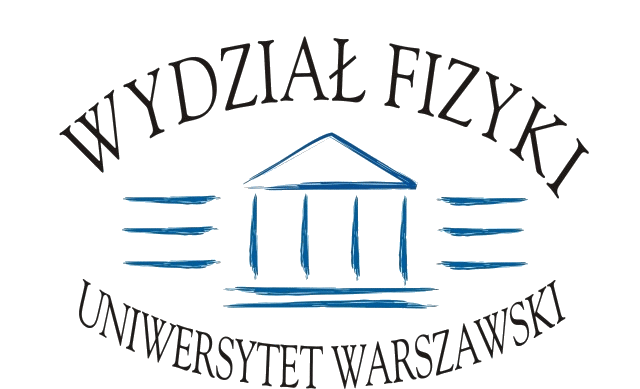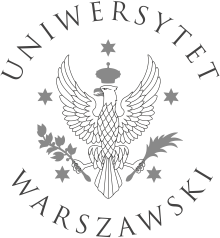Seminarium Fizyki Materii Skondensowanej
2006/2007 | 2007/2008 | 2008/2009 | 2009/2010 | 2010/2011 | 2011/2012 | 2012/2013 | 2013/2014 | 2014/2015 | 2015/2016 | 2016/2017 | 2017/2018 | 2018/2019 | 2019/2020 | 2020/2021 | 2021/2022 | 2022/2023 | 2023/2024 | 2024/2025
2025-03-21 (Piątek)
Przemysław Oliwa (IFD FUW)
General 2-Mode Non-Hermitian Hamiltonian as a Universal Tool for Microcavity Description
The typical description of a planar microcavity relies on two different approaches. The first is a fully numerical method, known as the Transfer Matrix Method (TMM), which is highly complex but accurately reproduces experimental observations, as it accounts for all interactions that are linear in the electric or magnetic field. The second approach is a semi-analytical method based on the diagonalization of a 2-mode Hamiltonian, which describes the interaction between two cavity modes with similar energy for a perpendicularly incident wave. While this second approach is significantly simpler, it has several limitations, such as being restricted to terms up to quadratic order and difficulties in determining the non-Hermitian part due to the complex relationship between the Stokes polarization pattern or energy dispersion and the coefficients of the 2-mode Hamiltonian. In some cases, higher-order terms are introduced into such Hamiltonians, but they are typically added in theoretical calculations as ad hoc terms.Here, we present new approaches for determining a 2-mode non-Hermitian Hamiltonian that accurately reproduces both energy and polarization dispersion for different types of cavities. The first method is based on the Green’s function and is limited to quadratic terms in the wavevector. The second method utilizes data obtained from the Transfer Matrix Method and, through symmetry-invariant considerations, enables the determination of a general 2-mode non-Hermitian Hamiltonian that fully captures both energy and polarization dispersion. These symmetry-based considerations predict the symmetry invariants for different types of cavities, ultimately allowing for the determination of symmetric polynomials fitted to the TMM results. Although this second approach is not derived from fundamental physical principles, it overcomes the limitations observed in the first method.This entirely new approach provides insight into non-Hermitian effects observed in birefringent microcavities. One example is the different number of polarization singularities (C-points – points where the light is purely circularly polarized) in the two photonic branches. Another example is the topological transition of the winding number of the exceptional point.
2025-03-14 (Piątek)
Piotr Chudziński (IPPT PAN)
On the edge of Mott(ness): Li_{0.9}Mo_{6}O_{17}, a curious quasi-1D material that sometimes superconducts
In the first part of my talk I will address a question: what happens when electrons’ motion becomes confined to one direction? Can we describe them? The answer, at least in the low energy limit, is the sine-Gordon model on the top of Tomonaga-Luttinger liquid which allows to find all correlation functions no matter how strong correlations are, and the resulting Berezinskii-Kosterlitz-Thouless (BKT) phase diagram. In the second part I will move on to introduce a real material where such situation is realized. It belongs to a family of molybdenum purple bronzes, whose other members were early shown to be Peierls-CDW compounds, while the physics of the Li-compound has remained elusive. From the beginning of 21st century experimental evidence has been mounting, indicating that this material may be a rare realization of Tomonaga-Luttinger liquid in a solid state setting. However, the lowest energy physics does not obey this canonical picture and the origin of a mysterious upturn of resistivity was understood only few years ago. Then I will move on to the most recent findings that directly probe the parent state of superconductivity. We were able to show that the Li0.9Mo6O17 is in fact in the higher symmetry state, right on the edge of Mott insulating region in the BKT picture. I will explain how the specific properties of Li0.9Mo6O17 enabled us to measure directly the BKT renormalization group flow and what conclusions we were able to draw from that.
2025-03-07 (Piątek)
Marko Ljubotina (TU Munich)
Dynamical properties of Rydberg atom chains
In this talk I will discuss the various atypical dynamical properties found in the PXP model. I will first discuss the infinite temperature transport properties, focusing on both the long and short time regimes. In the long time regime, when resolving the effects of Hilbert space fragmentation in the model, one can observe superdiffusive transport in an otherwise chaotic model. Perturbing the model with a chemical potential only improves the quality of the numerical results. I will then focus on the short time regime and introduce our recent results on quantum many-body scars (QMBSs). Apart from the now standard Z2 scars I will present a construction that allows us to identify a new set of reviving states by introducing a minimal amount of entanglement to the initial state. Finally, if time permits, I will discuss the topic of excitations on top of a QMBS background.
2025-02-28 (Piątek)
Zuzanna Wnuk, Wojciech Niedziółka, Mikołaj Walicki, Jakub Wróbel (IFT UW)
Students' talks
Zuzanna Wnuk
"Deterministic Generation of Single-Photon Sources in Hexagonal Boron Nitride Using a Focused Electron Beam",
Wojciech Niedziółka
"Ferromagnetic ordering in Hubbard model",
Mikołaj Walicki
"1d s=1/2 antiferromagnets in the magnon language",
Jakub Wróbel
"Global thermodynamic stability of the systems with chemical reactions".
"Deterministic Generation of Single-Photon Sources in Hexagonal Boron Nitride Using a Focused Electron Beam",
Wojciech Niedziółka
"Ferromagnetic ordering in Hubbard model",
Mikołaj Walicki
"1d s=1/2 antiferromagnets in the magnon language",
Jakub Wróbel
"Global thermodynamic stability of the systems with chemical reactions".
2025-01-24 (Piątek)
Krystian Jabłonowski, Jan Kossacki, Piotr Kulik, Ubaldo Olivas, Oskar Stachowiak
Students' talks
Krystian Jabłonowski
"Influence of external electric field on the real-space model with Hatsugai-Kohmoto interaction",
Jan Kossacki
”A Raman Scattering study of the CDW-related phonon modes in 2H-TaSe2”,
Piotr Kulik
”Microscopic derivation of the extended Bose-Hubbard parameters for dipolar particles in an optical lattice”,
Ubaldo Olivas
"Replica Trick",
Oskar Stachowiak
"Phase diagram of two-component mean-field Bose mixtures".
"Influence of external electric field on the real-space model with Hatsugai-Kohmoto interaction",
Jan Kossacki
”A Raman Scattering study of the CDW-related phonon modes in 2H-TaSe2”,
Piotr Kulik
”Microscopic derivation of the extended Bose-Hubbard parameters for dipolar particles in an optical lattice”,
Ubaldo Olivas
"Replica Trick",
Oskar Stachowiak
"Phase diagram of two-component mean-field Bose mixtures".
2025-01-17 (Piątek)
Maciej Łebek (IFT FUW)
Generalised BBGKY hierarchy for near-integrable dynamics
Bogoliubov-Born-Green-Kirkwood-Yvon (BBGKY) hierarchy is a cornerstone of kinetic theory and can be understood as an exact representation of dynamics of many-particle system in terms of correlation functions. For weakly interacting systems, it can be efficiently truncated and leads to the standard results of kinetic theory: Landau and Boltzmann equations. In our work we extend this framework by considering quantum or classical many-body Hamiltonian systems, whose dynamics is given by an integrable, contact interactions, plus weak, long-range, two-body potential. Crucially, such systems are strongly correlated and integrable interactions are treated non-perturbatively. We show how the dynamics of local observables is given in terms of a generalised version of BBGKY hierarchy, which we denote as gBBGKY, which is built for the densities, and their correlations, of the quasiparticles of the underlying integrable model. We benchmark our formalism with exact simulations of long-range interacting hard rod gas. Joint work with Leonardo Biagetti, Miłosz Panfil and Jacopo de Nardis.
2025-01-10 (Piątek)
Jacek Herbrych (Politechnika Wrocławska)
Magnon damping in quantum double-exchange ferromagnets
I present a comprehensive analysis of the magnetic excitations and electronic properties of fully quantum double-exchange ferromagnets, i.e., systems where ferromagnetic ordering emerges from the competition between spin, charge, and orbital degrees of freedom, but without the canonical approximation of using classical localized spins. Specifically, I investigate spin excitations within the Kondo lattice-like model, as well as a two-orbital Hubbard Hamiltonian in the orbital-selective Mott phase. Computational analysis of the magnon dispersion, damping, and spectral weight of these models reveal unexpected phenomena, such as magnon mode softening and the anomalous decoherence of magnetic excitations as observed in earlier experimental efforts, but without the need to use phononic degrees of freedom. I show that these effects are intrinsically linked to incoherent spectral features near the Fermi level, which arise due to the quantum nature of the local (on-site) triplet. This incoherent spectrum leads to a Stoner-like continuum on which spin excitations scatter, governing magnon lifetime and strongly influencing the dynamical spin structure factor. By varying the electron density, our study explores the transition from coherent to incoherent magnon spectra. Finally, I will show that this behavior is also present in multi-orbital models with partially filled orbitals, namely in systems without localized spin moments, provided that the model is in a large coupling strength regime.
2024-12-20 (Piątek)
Valentin Leeb (TUM, Munich)
Spontaneous Formation of Altermagnetism from Interaction-induced Electronic Instabilities
Altermagnetism represents a type of collinear magnetism, that is in some aspects distinct from ferromagnetism and conventional antiferromagnetism. In contrast to standard ferro- and antiferromagnets, altermagnets exhibit extra even-parity wave spin order parameters resulting in a spin splitting of electronic bands in momentum space. I will start with a pedagogical introduction to the altermagnetic symmetry requirements, by studying a simple toy model, which can be realized with ultracold fermionic atoms in optical lattices. However, this and all other current models featuring altermagnetic instabilities, rely on specific lattices with crystallographic sublattice anisotropy. I will show that altermagnetism can also form as an interaction-induced electronic instability in a lattice without such strong symmetry requirements. As proof of principle I will introduce a microscopic example of a two-orbital model demonstrating that the coexistence of antiferromagnetic and staggered orbital order can realize robust altermagnetism. Finally, I will discuss a mechanism for spontaneous altermagnetism in cuprate compounds based on the formation of oxygen moments.
2024-12-13 (Piątek)
Hiroyuki Yamase (NIMS Tsukuba, Japan)
Long-range Coulomb interaction on a bilayer lattice system and the resulting charge dynamics
While the long-range Coulomb interaction (~1/r) is usually handled in a continuum space, I here provide its function form on a bilayer lattice system and elucidate the resulting charge dynamics. The results are compared with resonant inelastic x-ray scattering data obtained in Y-based high-temperature cuprate superconductors with Tc close to 100 K.
2024-11-29 (Piątek)
Wojciech Brzezicki (Jagiellonian University, Kraków and MagTop, Warsaw)
Surface chiral metal and warped time-reversal symmetry
We develop theory of dichroism and spin-dichroism for Sr2RuO4 to describe the observed peculiarities in ARPES. It is based on a tight-binding model for t2g electrons used earlier and contains a crucial ingredient: warped time-reversal symmetry. It assures perfectly antisymmetric spin-integrated dichroic signal while keeping spin-resolved signal completely non-symmetric.
Stron 2 z 3






